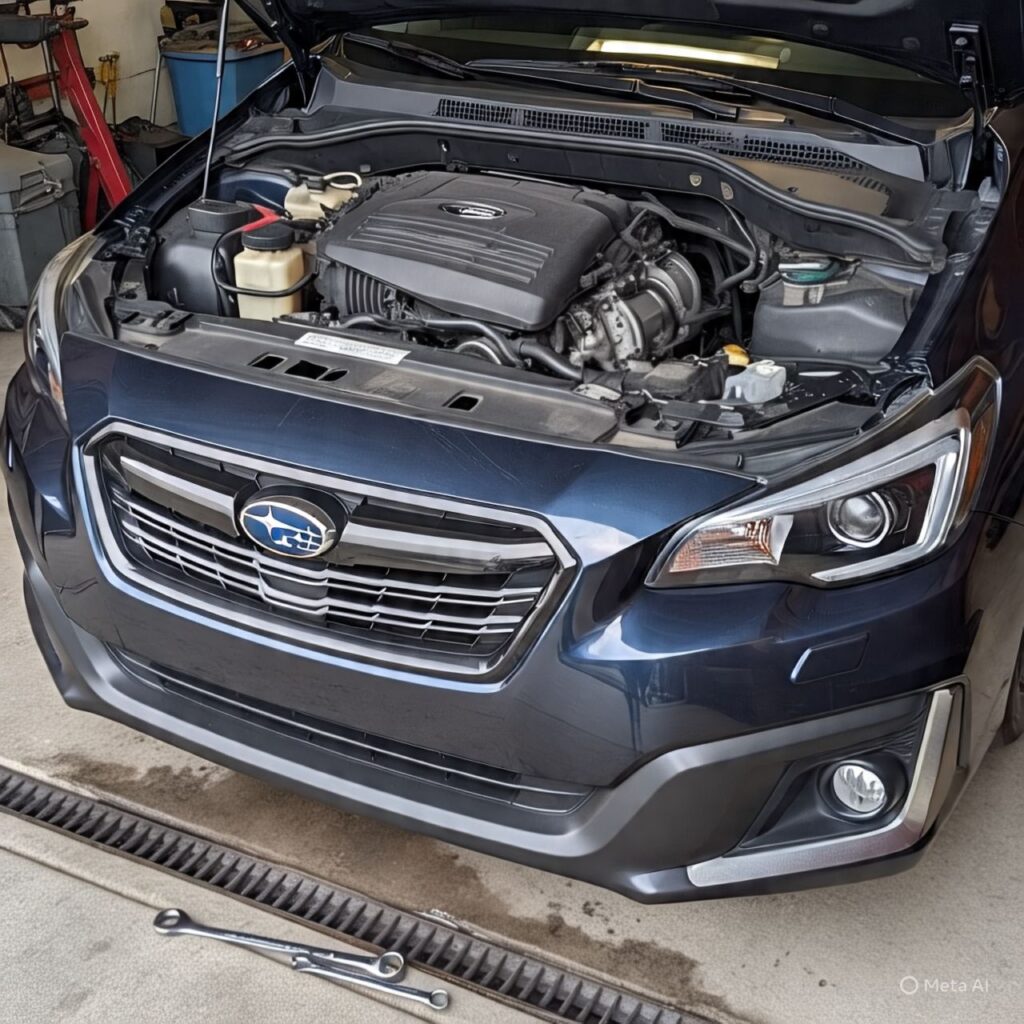
A vehicle failing to start after a battery replacement can be both frustrating and confusing, especially for owners of reliable makes like Subaru. If your 2015 Subaru won’t crank after battery replacement, you’re not alone. Many drivers face this issue, which can stem from a variety of electrical, mechanical, or procedural problems. In this comprehensive guide, we’ll cover the potential causes, step-by-step troubleshooting methods, and answer common questions surrounding this issue.
Why Your 2015 Subaru Won’t Crank After Battery Replacement
Replacing a car battery seems like a simple task, but in modern vehicles like the 2015 Subaru Outback, Forester, or Legacy, there are several interconnected systems that can complicate matters. Here are the most common reasons why your Subaru won’t crank after a new battery has been installed.
1. Loose or Improper Battery Connection
The most straightforward reason your 2015 Subaru won’t crank after battery replacement is a poor connection. If the terminals are not tightly secured or the cables are corroded, the current may not flow properly.
Symptoms:
- No crank or click when the ignition is turned
- Dim dashboard lights
- Unresponsive electrical accessories
Fix:
- Check that both the positive and negative terminals are clean and tightly connected.
- Remove any corrosion with a terminal cleaner or baking soda and water solution.
2. Faulty Starter Relay or Fuse
Subarus are known for their complex electrical systems. If a fuse blew during the battery swap or the starter relay is faulty, the car won’t crank.
Symptoms:
- Clicking noise when turning the key
- Dashboard lights come on, but the engine doesn’t crank
Fix:
- Locate the starter fuse and relay in the fuse box (check owner’s manual).
- Replace any blown fuses with the correct amperage.
- Test the relay using a multimeter or by swapping it with another similar relay.
3. Anti-Theft System Activation
Another reason your 2015 Subaru won’t crank after battery replacement may be due to the vehicle’s anti-theft system. Disconnecting the battery can sometimes trigger the immobilizer, especially if the replacement process involved multiple power interruptions.
Symptoms:
- Security or key symbol flashing on dashboard
- No response from starter despite full battery
Fix:
- Use your key fob to lock and then unlock the doors.
- Insert the key into the ignition and turn it to the “on” position without starting. Leave it for about 10–15 minutes until the light stops flashing.
- Try starting the car again.
4. Neutral Safety Switch Issue
If you’re trying to start the car in gear, it won’t crank. The neutral safety switch prevents the engine from cranking in any gear other than Park or Neutral.
Symptoms:
- Car won’t start in Park, but may start in Neutral
Fix:
- Try shifting the gear to Neutral and starting the car.
- If successful, the neutral safety switch may need adjustment or replacement.
5. Faulty Ground Connection
A poor ground connection can result in insufficient electrical flow to start the engine.
Symptoms:
- Flickering lights
- Inconsistent electrical behavior
- Engine won’t crank despite new battery
Fix:
- Inspect the ground wire from the battery to the chassis.
- Ensure the connection is clean, tight, and corrosion-free.
6. Dead-on-Arrival New Battery
It’s rare but possible that your newly installed battery is defective or undercharged.
Symptoms:
- No crank
- Dim or flickering lights
- Jump-starting works
Fix:
- Test the battery with a voltmeter. It should read 12.6 volts or more when fully charged.
- If undercharged, try jump-starting or replacing it with another unit.
Step-by-Step Troubleshooting: Diagnosing Why Your Subaru Won’t Crank
Use this checklist to systematically narrow down the cause:
Step 1: Check the Battery Voltage
Use a multimeter to measure the voltage. A healthy battery should be at:
- 12.6V or higher – fully charged
- 12.2V to 12.4V – partially charged
- Below 12V – undercharged or defective
Step 2: Inspect the Terminal Connections
Ensure both the positive and negative terminals are:
- Tight
- Clean
- Free of corrosion
Step 3: Verify Dashboard Indicators
Turn the key to the “on” position and observe:
- Are the lights dim or flickering?
- Is there a flashing security indicator?
Step 4: Listen for Clicks or Noises
A single click may indicate a bad starter relay or solenoid. Multiple clicks usually point to a weak battery.
Step 5: Try Starting in Neutral
If Park doesn’t work, shift to Neutral and attempt to start the engine. This checks the neutral safety switch.
Advanced Causes: When the Basics Don’t Solve It
If you’ve checked all the basics and your 2015 Subaru won’t crank after battery replacement, the issue may be more complex.
1. ECU Reset Needed
Subaru’s Engine Control Unit (ECU) may need time to reset or recalibrate after a battery change.
Fix:
- Disconnect the battery again.
- Wait 15 minutes.
- Reconnect and attempt to start the car.
2. Faulty Starter Motor or Solenoid
The starter motor may have coincidentally failed, especially in older vehicles.
Fix:
- Tap the starter lightly with a hammer while someone turns the key. If the car starts, the starter is failing.
- Replace the starter if needed.
3. Ignition Switch Failure
The ignition switch sends power from the battery to the starter and other electrical components.
Fix:
- Check if turning the key provides power to accessories but not the starter.
- If faulty, the ignition switch may need replacement.
Preventive Measures When Replacing a Battery
To avoid future problems where your 2015 Subaru won’t crank after battery replacement, follow these precautions:
- Use a memory saver: A device that plugs into the OBD-II port or cigarette lighter to preserve computer settings.
- Avoid short circuits: Make sure tools don’t bridge the terminals.
- Secure all connections tightly: Use proper torque specs for terminal nuts.
- Check battery specs: Ensure the replacement battery meets Subaru’s requirements (Cold Cranking Amps, size, etc.).
Frequently Asked Questions (FAQs)
Q1: Why does my 2015 Subaru not start but has power after battery replacement?
This can indicate a failed starter relay, blown fuse, or anti-theft system lockout. Power to accessories doesn’t necessarily mean the starter circuit is functional.
Q2: How do I reset my Subaru after changing the battery?
Try the following:
- Turn the key to the “on” position for 10–15 minutes to allow systems to recalibrate.
- Lock and unlock the doors with the remote to reset the anti-theft system.
- Disconnect and reconnect the battery, ensuring all terminals are clean and secure.
Q3: Can the immobilizer prevent my Subaru from starting after battery replacement?
Yes. The immobilizer system may activate when the battery is disconnected and can prevent the engine from cranking. Use the key fob to reset the system.
Q4: Is it safe to jump-start a 2015 Subaru after installing a new battery?
Yes, but it should only be done if you’re sure the new battery is undercharged. Repeated jump-starts may indicate deeper issues like alternator failure or a parasitic draw.
Q5: Could the alternator cause my Subaru not to crank after battery replacement?
While the alternator charges the battery, it shouldn’t prevent cranking unless it failed and drained the battery again. Test the alternator once the vehicle is running.
When to Seek Professional Help
If all basic and intermediate troubleshooting fails and your 2015 Subaru won’t crank after battery replacement, it may be time to take it to a professional mechanic. Signs that you need help include:
- Multiple failed battery replacements
- Error codes showing on the dash or OBD-II scan
- Intermittent electrical failures
- Starter or ignition component failure
/Modern Subarus are equipped with numerous sensors and modules that require diagnostic tools to test properly. A certified Subaru mechanic will have the tools and expertise to pinpoint the exact fault.
Conclusion
If your 2015 Subaru won’t crank after battery replacement, don’t panic. While it might seem like a straightforward battery swap should go smoothly, there are numerous reasons this issue can occur—from simple loose connections to complex anti-theft or ECU problems. By systematically working through the common causes and applying the fixes outlined in this guide, you can often get back on the road without needing a tow or expensive repairs.
If you’re still stuck, the issue may be more intricate and require professional diagnostics. Regardless, being informed about these potential causes can help you communicate better with a mechanic and avoid future issues during battery replacements.






